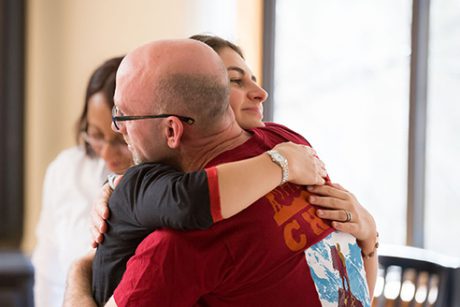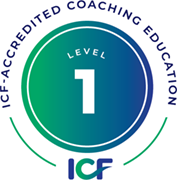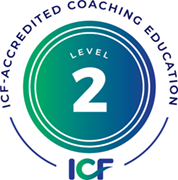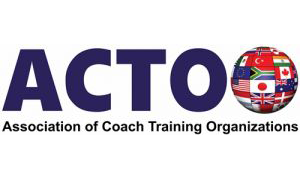The arc of human development leads towards a greater capacity to stay focused and resilient in the midst of rapid and ambiguous change, a more inclusive care for others, and the capacity to discern and shape the emerging future, even when so much is unknowable.
These capacities are essential for leading in the world we live in.
While this development process is natural, often the challenges leaders face require capacities that we have not yet developed. Presence-Based Coaching exists to accelerate this natural process to prepare for challenges that our histories have not equipped us to address.
Which raises the interesting question of whether, since development occurs naturally, couldn’t someone dedicated to her own learning accomplish the same thing without a coach? Well, maybe.
One the one hand, all the same principles apply. Any of us can create sound learning strategies for ourselves. An exceptionally rigorous and self-directed learner can certainly accelerate their own development using the strategies on this page. In fact, we encourage you to do so, and we ourselves employ many of these ourselves.

At the same time, we can only see what we have learned to see. We all have areas of blindness, long-practiced habits of behavior and thought that have served us well in the past, and cultural filters that prevent us from seeing ourselves and our context clearly. The capacity to delude ourselves into believing what we want is deeply rooted in our biology! To add to this, people with this level of dedication are often deeply committed to other things. A coach provides a level of accountability, an outside perspective, real-time feedback, and many other benefits that we truly can’t provide for ourselves. See the Coaching FAQ for more.
That said, here are some starting points for self-development. We have organized these into the Developmental Cross-Training framework described by Wilber, Flaherty and others. Integrating strategies from all these domains engages different parts of the nervous system in learning, and provides a more whole and integrated approach than if any of the domains are omitted.
Supporting resources for many of these strategies can be found in the Community Resources section of this site.
Engage Perception, Awareness and Understanding
Develop your capacity to see and think differently, to be a different kind of observer, and to be aware of yourself.
- read literature about development, learning, leadership, neuroscience, embodied cognition, etc. (See Bibliography for suggestions.)
- take up a regular sitting or meditation practice. Even 8 minutes a day has clearly demonstrated benefits
- reflect with consistent self-observation, journaling or other practices
- practice identifying and really taking on multiple perspectives on an issue or situation
- expand your understanding by exposing yourself to other parts of the organization, community, and world where people see the world very differently.

Engage the Body in Whole Person Learning
Engage your body in building your “somatic literacy.” Cultivate your access to the intelligence of the body and how it can resource us no matter what is going on around us.
- do regular and body awareness practices (yoga, breathing, centering/grounding practices, tai chi, martial arts, etc.)
- do a Rolfing program with a dedicated practitioner to develop awareness of body sensations, and to reshape the structure of the body to change limiting patterns
- use body scans, a guided audio practice for developing specific awareness in all areas of your body
- commit to a custom somatic practices relevant to a particular commitment (ballroom dancing for influencing across functions, parachuting or rock-climbing for working with risk aversion, Pilates for taking a strong stand, yoga for flexibility of thinking, etc.)
- take good care of your body… it’s the only one you have. Sleep, diet, exercise, and play are deeply restorative and directly affect your capacity for embodied learning

Engage Culture and Relationships
Shape your relationships in ways that support your learning and development. Engage other stakeholders who can be committed to your learning. Practice new behaviors in relationships both safe and challenging.
- hang out with people who think in different, more creative, or more complex ways than you do.
- make and respond to requests explicitly and clearly
- request specific feedback about behaviors you’re seeking to cultivate
- declare the new behaviors you tend to exhibit to people whose opinion you care about
- create an on-going community of practice with others who are committed to learning and application in areas of interest to you
- face into difficult conversations that might be easier to avoid but that also require new skills and courage
- interview others who have specific capacities, ways of thinking and leading, or other traits that you aspire to.

Engage Environment and Systems
- design accountability by declaring your development goals and making the results public
- create new “facts on the ground” by making difficult-to-reverse moves like proposing marriage, announcing retirement, signing up for a development experience, announcing a new project, buying a plane ticket, or signing a contract. “Facts on the ground” provide a forcing function for new behaviors.
- accept challenging assignments for which you are qualified, but barely! While this sounds counterintuitive, doing things that you already do well is not the way to learn new things. Comfort and development are often antithetical.
- create structures that support you. (Firewalls around development time, meetings with yourself, email management tools, etc.
- spend time in nature. Things make more sense in the natural world. Time in the woods, on a river, hiking or boating… these are restorative and provide new perspectives.
- experiment with safe-to-fail innovations that provide learning at acceptable risk.









